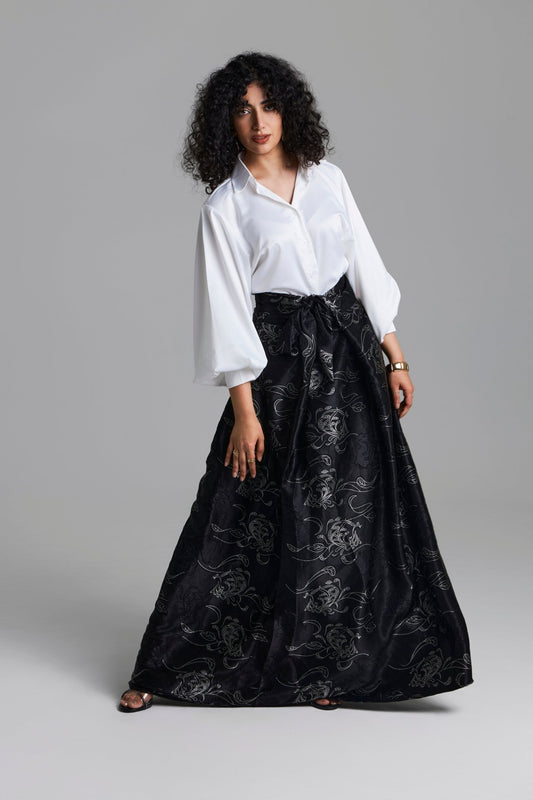In a world increasingly focused on sustainability, the fashion industry stands at a pivotal crossroads. As consumers become more conscious of their choices, the demand for Luxury Ethnic Wear that is both stylish and sustainable is on the rise. This transformation not only reflects a shift in consumer preferences but also highlights a broader societal trend toward ethical living. The significance of this movement cannot be overstated, as it intertwines cultural heritage with modern environmental concerns, making it an essential topic for fashion enthusiasts.
The Allure of Luxury Ethnic Wear
Luxury ethnic wear embodies a rich tapestry of culture and tradition, elevating personal style while celebrating heritage. In Dubai, where diverse cultures converge, the appeal of Luxury Ethnic Wear resonates deeply. Traditional fabrics and intricate designs create a visual feast, allowing individuals to express their cultural identity. This phenomenon is not merely about aesthetics; it represents a deeper connection to one’s roots and an appreciation for craftsmanship. As fashion evolves, the integration of sustainable practices into this realm becomes increasingly important.
Sustainable fashion is defined by its commitment to ethical production processes and environmentally friendly materials. The allure of Luxury Ethnic Wear lies in its ability to tell a story—each piece often handcrafted with care and precision, reflecting the artistry of skilled artisans. This aspect of fashion not only enhances the experience of wearing such garments but also promotes a sustainable future. By choosing luxury pieces that are ethically made, consumers contribute to a broader movement advocating for responsible fashion.
The Shift Towards Sustainable Fashion in Dubai
Dubai has emerged as a hub for innovative fashion, blending traditional aesthetics with modern sensibilities. The growth of Sustainable fashion Dubai is particularly noteworthy, as local designers and brands increasingly prioritize eco-friendly materials and ethical labor practices. This shift is not just a trend; it represents a fundamental change in how fashion is perceived and consumed. With a rich cultural backdrop, Dubai’s fashion scene is uniquely positioned to lead the charge toward sustainability.
Local designers are embracing materials such as organic cotton, recycled fabrics, and natural dyes, creating stunning collections that honor both tradition and the environment. The emergence of Sustainable fashion Dubai signifies a commitment to preserving the planet while celebrating the beauty of ethnic wear. This dynamic interplay between sustainability and luxury allows for the creation of timeless pieces that resonate with consumers who value both style and ethics.
Embracing Ethical Practices in Fashion
The demand for transparency in the fashion supply chain has never been greater. Consumers are increasingly interested in knowing where their clothes come from and how they are made. This awareness has prompted many luxury brands to adopt ethical practices, ensuring that every step in the production process aligns with sustainable values. By prioritizing fair wages and safe working conditions for artisans, the industry can create a more equitable landscape.
The rise of Sustainable fashion Dubai reflects this growing concern for ethical practices. Designers are not only focused on aesthetics but also on the impact their work has on the environment and society. The fusion of traditional craftsmanship with contemporary design principles allows for the creation of pieces that are not only beautiful but also meaningful. This commitment to ethical fashion is vital for fostering a culture of responsibility among consumers and producers alike.
The Future of Luxury Ethnic Wear
As the fashion landscape continues to evolve, the future of Luxury Ethnic Wear looks promising, especially when intertwined with sustainability. The intersection of tradition and modernity creates endless possibilities for innovation. Consumers are seeking more than just clothing; they desire pieces that resonate with their values and reflect their identities. This trend is shaping the future of fashion, where style and sustainability coexist harmoniously.
Brands that embrace this ethos are likely to thrive in an increasingly competitive market. The integration of sustainable practices into luxury ethnic wear not only appeals to environmentally conscious consumers but also enhances the overall brand narrative. By championing sustainability, these brands not only contribute to a healthier planet but also foster a deeper connection with their audience.
Conclusion
The rise of Luxury Ethnic Wear and its integration with sustainable practices marks a significant shift in the fashion industry. As Dubai continues to lead the way in Sustainable fashion Dubai, it sets a powerful example for others to follow. The commitment to ethical production and the celebration of cultural heritage create a unique space for fashion that is both luxurious and responsible. Embracing this movement not only enriches personal style but also supports a brighter future for the planet. For those looking to explore this exciting realm, visiting rubeenaameen.com offers a glimpse into the beautiful fusion of tradition and sustainability.


